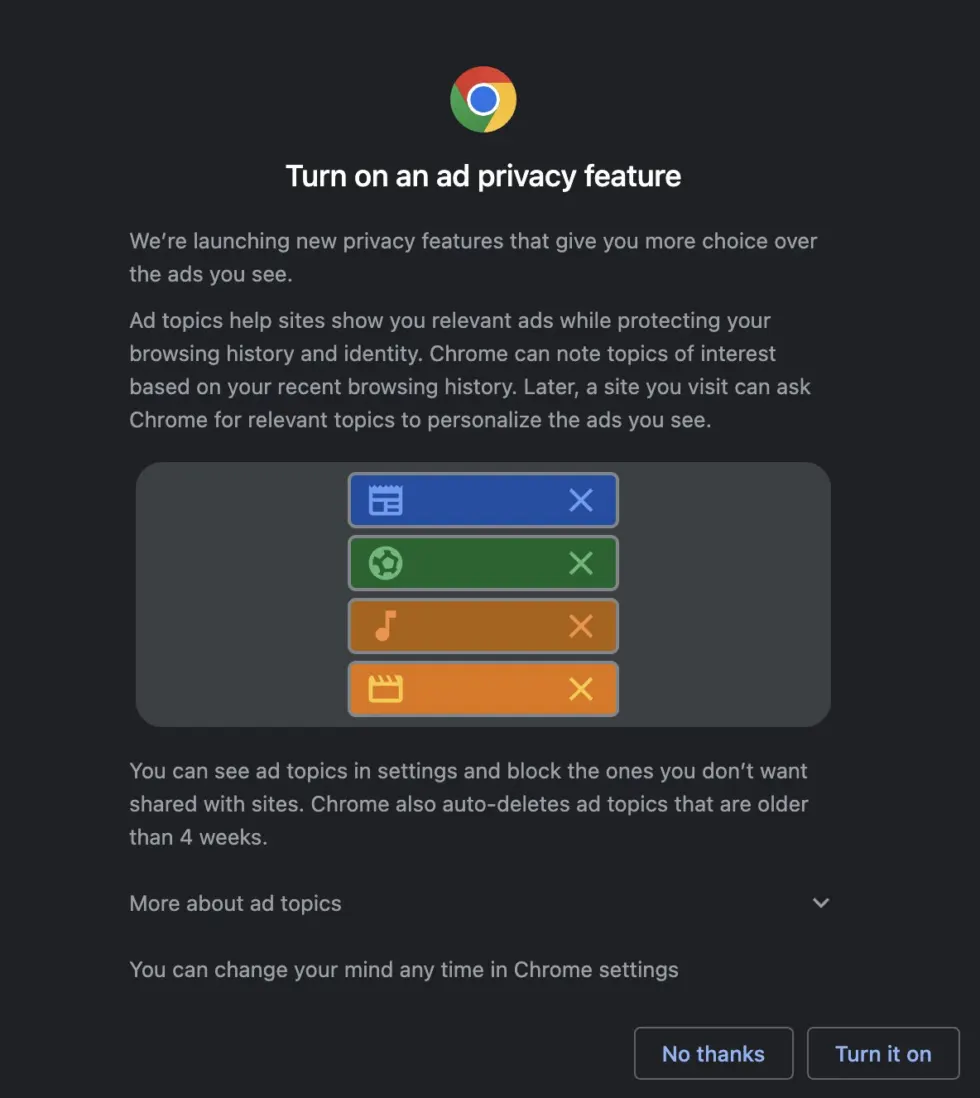Google Has Enabled Browser Tracking for All Chrome Users
Don't be distracted by Chrome's new redesign; there's another development under the hood that deserves your attention. Chrome is introducing a new ad platform known as the "Privacy Sandbox," and it's making a widespread debut today. If you haven't been following this development closely, here's what you need to know: This feature will track your web browsing activity, compiling a list of advertising topics that it will share with websites upon request. What's significant is that this ad platform is integrated directly into the Chrome browser. You may have heard of it previously as "FLoC" or the "Topics API." Despite facing opposition from a broad spectrum of non-advertising entities, Google, the owner of Chrome and one of the world's largest advertising companies, is pushing forward with its implementation.
Google appears to be aware that this move may not be well-received. Unlike the high-profile blog post announcing Chrome's redesign, the launch of the new ad platform is somewhat discreetly tucked away on the privacysandbox.com website. The blog post indicates that the ad platform has reached "general availability" today, signifying its rollout to most Chrome users. This has been a long-anticipated development, with the APIs being gradually introduced about a month ago and numerous incremental steps taken in beta and developer builds. But now, the implementation is complete.

Not only is Google one of the world's largest advertising companies, it also owns a majority share of the web browser market, with an estimated 70-80% of all global users using Chrome. If you're a little creeped out with the idea of Chrome automagically sending all your browsing habits to any advertiser that asks for it, you're not alone. A few months back, we published a headline post about FLoC, and why it was such a terrible idea. Google has argued that this new tracking is better than the old tracking. Google's entire business model is built on tracking users, so clearly the third option, no tracking, is not an option.
What's a poor Chrome user to do? For starters, go to the Chrome Settings, then "Privacy and Security," then "Ad privacy" (alternatively, paste "chrome://settings/adPrivacy" into the address bar). From there, you'll have to wade through three individual pages, and turn off the top checkbox. In a mere six clicks, you can presumably turn off the ad platform. Alternatively, you could install another browser, such as Firefox or Brave. We recommend Brave, which is based on Chrome, but with the privacy trashing bits removed.
Did any user in the world want a user-tracking and ad platform baked directly into their browser? Probably not, but this is Google, and they control Chrome, and they make the rules. If that offends you, and it should, then consider switching to another browser.

